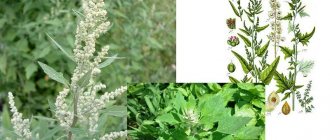Types of first aid kits
There are several types of first aid kits. Each of them includes a certain amount of certain medications and additional elements:
- automobile _ The set includes medications necessary for treating abrasions and wounds resulting from a road traffic accident. Also, such a set necessarily includes drugs intended to temporarily alleviate the health condition of a person with general diseases;
- first aid kit for company employees . The main components of this kit are medications intended to provide first aid in connection with an injury at work. The kit must be equipped with antiseptics, painkillers and drugs to stop bleeding. Such kits also include other medical supplies designed to alleviate the condition of workers with general diseases;
- against burns . Such kits include medications intended to alleviate the condition of a person who has received burns of varying degrees;
- nursery _ This type of first aid kit is the number one necessity both at home, where children of different age categories live, and in preschool and educational institutions. Depending on the age and weight of the child, the kit is replenished with the necessary drugs and other necessary medical elements;
- sports _ The first aid kit includes various medications designed to restore the musculoskeletal system. The kit also necessarily includes painkillers and antiseptics;
- universal _ This set is represented by multiple drugs needed both in domestic conditions and in enterprises of various areas of activity.
In addition to the listed types and general components, each first aid kit must be equipped with the necessary tools and accessories, such as a bandage, tourniquet, cotton wool, scissors, antibacterial patch, syringes, alcohol and much more. Each kit also includes hydrogen peroxide to reduce the likelihood of infections in the wound and prevent inflammation.
Using a First Aid Kit
When using a first aid kit, there are some rules that it is advisable to follow in order to avoid undesirable consequences for the victim or your own infection from the patient in the case of viral infections.
The first rule of using a first aid kit is to work with victims wearing rubber gloves and, if necessary, a protective mask. This mainly applies to work with infectious lesions and open wounds. If any contaminated liquid comes into contact with a person providing assistance to an infected patient, it should be immediately removed with an antiseptic wipe.
All medications from the first aid kit must be used strictly for their intended purpose. For example, tourniquets are used for bandaging to stop bleeding. The time of application of the tourniquet must be recorded (for this purpose, there is a notepad and pen in the first aid kit). Wounds, scratches, abrasions should be treated with antiseptic agents. In case of open wounds, do not forget to use sterile wipes. If necessary, the wound can be bandaged. The use of other medications is also possible only according to the instructions for each of them.
A first aid kit is the number one necessity.
Each pharmacy kit includes gloves designed to prevent the introduction of infections into the body of a healthy person in the event of providing first aid to a victim. Unfortunately, not every person has first aid skills. For information, the pharmacy kit includes instructions and indications for the use of a particular drug included in the first aid kit.
A first aid kit is a necessity in every home, office, on vacation, on the go, in any enterprise and in any organization. Having the necessary first aid medications in your arsenal, you can not only improve your health, prevent infection and the development of a serious illness, but also prevent death in the event of serious injuries and other damage.
Composition of a first aid kit
The composition of a first aid kit primarily depends on its purpose. Since the use of this kind of medical protective equipment can be useful in completely different places and in the treatment or prevention of various types of injuries, first aid kits are filled in accordance with these conditions.
Basic items that may be included in a first aid kit include:
- means for treating wounds (bandages, tourniquets, adhesive plasters, etc.),
- antiseptic agents (hydrogen peroxide, iodine, boric acid, etc.),
- analgesic medications (aspirin, analgin, etc.),
- antimicrobial drugs (streptocide, ampicillin, etc.),
- medications for heart pain (validol, corvalol, etc.),
- antispasmodics (no-spa, baralgin, etc.),
- detoxifying agents (activated carbon, etc.),
- antiallergic drugs (suprastin, tavegil, etc.),
- ammonia,
- chemical antidotes,
- the first antishock drugs,
- means and tools necessary during first aid (rubber (latex) gloves, scissors, clamps, bags, masks, notepad and pen, etc.)
Choosing a first aid kit
Tourist first aid kit
It is a must-have element for various country trips. However, it is difficult for a person far from medicine to understand the whole variety of existing medications and dressings and fixing materials. In addition, taking the wrong medicine or taking a larger dose than necessary can only worsen the victim's condition.
A tourist’s first aid kit can be purchased in a ready-made version, which contains all the necessary and non-harmful medications and materials, with detailed instructions. However, you still have to deal with the contents. It is possible that there will be a need to supplement the content depending on the size and composition of the tourist group. You may also find the material on the procedure for registering tourist groups useful.
If you decide to assemble a traveling first aid kit with your own hands, then consider the following rules:
- All medications must be classified as urgent, that is, their action is aimed at eliminating acute conditions (poisoning, fever, heart attack)
- The dressing should cover the entire group of injuries: from a small cut to a severe fracture (you can see the rules for first aid for fractures in the video presented)
- These drugs should be accessible, that is, they can be easily purchased at any pharmacy without a prescription.
- Give preference to those medications that you have already encountered. This will protect you from possible side effects.
- Do not buy advertised drugs, their effect may be exaggerated. In most cases, their cheaper counterparts are no worse.
The specific contents of the hiking first aid kit will also depend on the type and category of the hike (water, mountain, forest, extreme), duration, age of the participants, time of year
In the case when the group includes a person who has permission (certificate) to perform injections, then the contents can include ampoules for injections and syringes of various sizes.
Tourist first aid kit
The composition of a first aid kit also differs depending on the area where you plan to go.
Basic kit in a first aid kit
Any set must start from one thing - the basic one. And depending on the situation during the hike, this set is supplemented with other drugs. The main set should be like this:
- Antiseptics - in order to disinfect damage. From them they take peroxide, brilliant green or iodine and antimicrobial sprays.
- Ointments that will help with 1st-3rd degree burns. For example, “Dermazin” or “Panthenol”.
- Antibiotics, for example Norfloxacin. They must be of a wide spectrum, since it is impossible to predict the type of infection.
- Preparations for injections. You will need solutions of Analgin, Furosemide and Diphenhydramine. It is also worth taking a local analgesic, for example, Lidocaine. Accordingly, you need to take with you a sufficient number of disposable syringes, gloves and water for injection.
- Remedies for injuries and bruises or sprains.
- Antipyretic and painkillers in powders and tablets - Paracetamol, Ibuprofen, etc.
- Antihistamines - Claritin, Fenistil.
- Antispasmodics and adsorbents. It’s worth starting with activated carbon, don’t forget “Smecta” and “No-shpu”. The rest is at your discretion.
- Bandages, napkins, tourniquets, cotton wool, as well as scissors and tweezers.
- Medical glue BF 6, for healing wounds and cuts.
- The most convenient thermometer is an electronic one.
- Ammonia.
- Sprays and ointments that repel mosquitoes and ticks, as well as eliminate the consequences of bites.
First aid kit for a hike in the forest
A trip to the forest is often accompanied by various damage to the skin - abrasions and scratches, burns, bruises and calluses. Poisoning is common, and cold nights cause colds. You need to create a first aid kit with priority on:
- Dressing materials.
- Ointments and antiseptics.
- Medicines for the digestive tract.
- Insect repellents.
- Antipyretic.
- Medicines for cough and runny nose.
First aid kit for hiking in the mountains
A mountain first aid kit is not much different from a basic one. When going to such an area, tourists may experience altitude sickness, so it is necessary to equip first aid kits with medicine like Diacarb. You also need to increase the amount of ointments for bruises and sprains, and stock up on elastic bandages.
Tourist first aid kit at sea
Trips to the sea involve more time spent under the scorching sun. The first aid kit is always stocked with medications for sunburn and creams for and after tanning. If you can’t sunbathe, but during an excursion you have to wander around in the sun for a long time, you need to take more protective creams and lubricate the most dangerous places on the skin - the shoulders, face (nose and cheeks) and neck.
Sunburn often causes skin rashes. It is important not to neglect antihistamines.
If you plan to spend time actively, it is important to take more elastic bandages and ointments for bruises and sprains, as well as other dressing material. They will relieve inflammation and relieve pain from injuries and protect against infection.
Sea travel often causes motion sickness among tourists. This suggests that you need to take anti-seasickness remedies. For example, "Avia-Sea".
Basic kit in a first aid kit
The list of medications in a first aid kit for a group cannot be compiled at random. On a long hike you need dressings, remedies for intestinal infections, injections, and antibiotics. It is quite difficult for a person without a medical education to understand all this. There is a risk of forgetting an important detail or taking with you a specific drug that cannot be taken without a prescription. Therefore, the main rule for forming the right traveling first aid kit is careful preliminary planning. Many situations need to be considered.
A first aid kit for a hike should include the following groups of drugs, medical products and dressings:
- External antiseptics.
- Medicines used for damage to the eyes and ears.
- Painkillers and antipyretics.
- Cardiovascular drugs.
- Antiallergic drugs.
- Sedatives.
- Medicines that are used for diseases of the respiratory system and respiratory organs.
- Drugs used for gastrointestinal diseases.
- Anti-infective medicines.
- Various products for external use (ointments and gels).
- Tools.
- Injection solutions.
- Dressing materials.
As a result, the set of drugs is quite extensive. Why take so many medical supplies with you? All medications on the list are needed just in case, i.e. there are no medications that would be vitally necessary on the list for a general first aid kit. Such medications are considered individual medications and the participants of the trip who require them must ensure that they are available in sufficient quantities.










